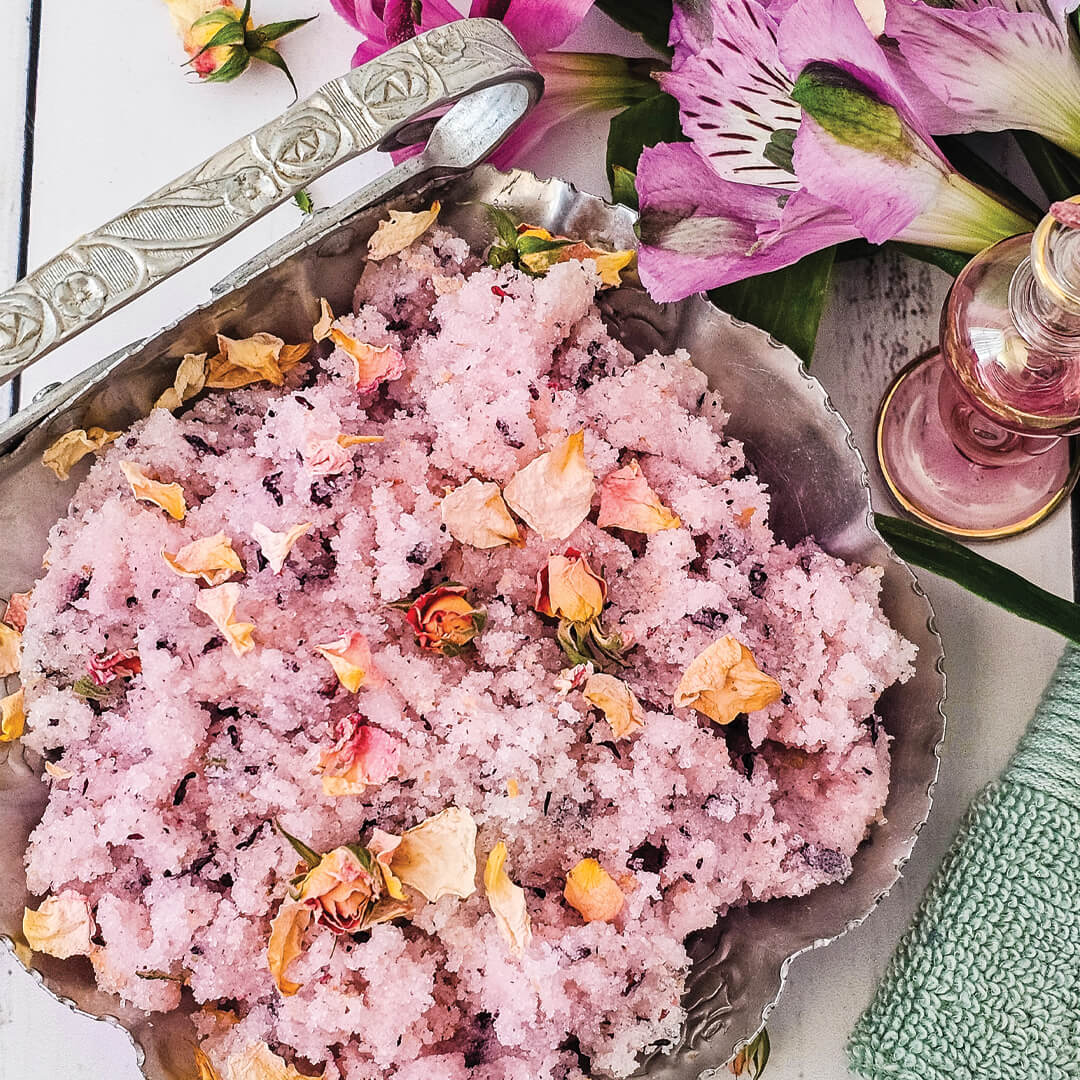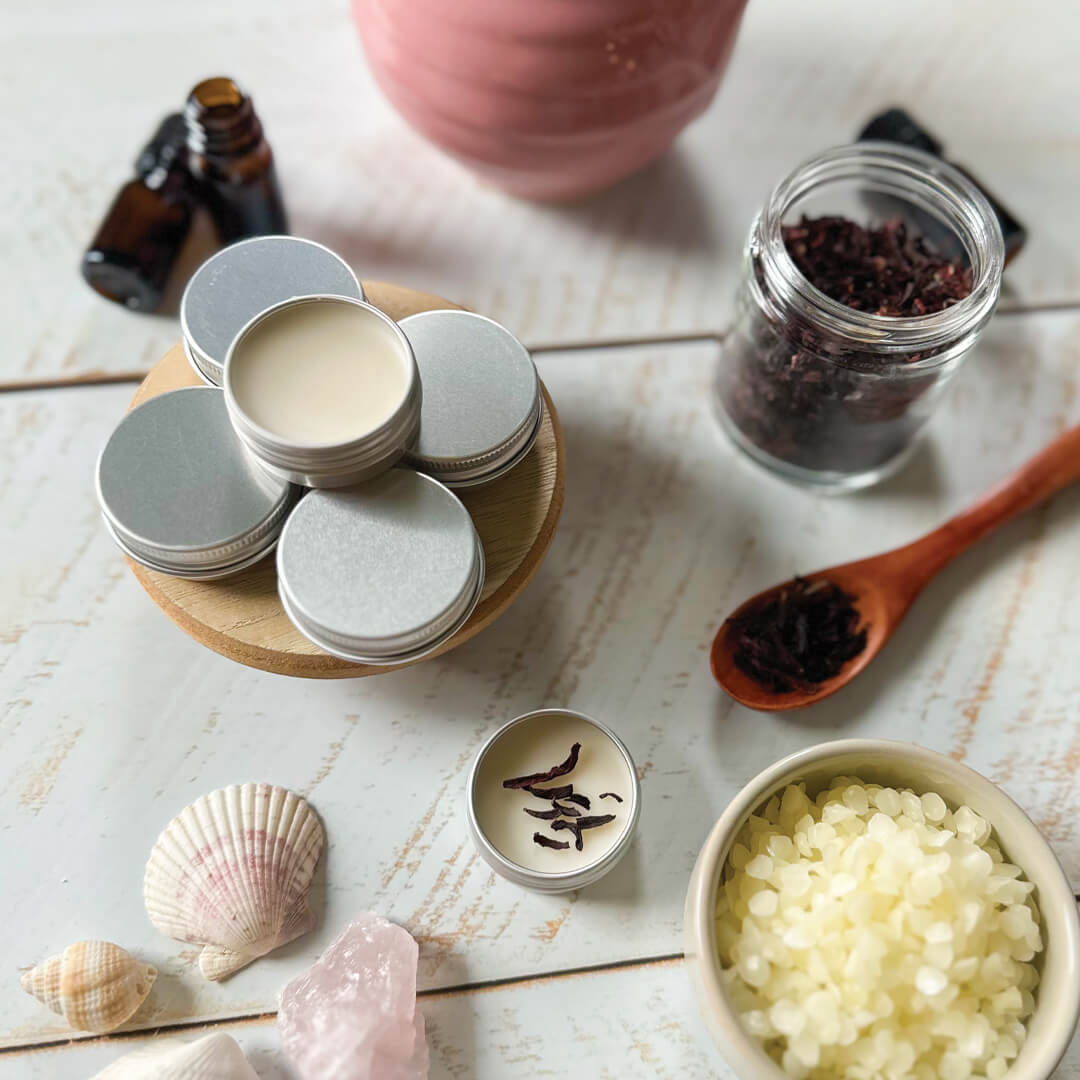Slowing Down with Hibiscus
0 Comments
Words: Danielle Williams
Over my years managing Willow and Sage, I have amassed a wealth of knowledge from the brilliant contributors we feature. From certified herbalists to recreational hobbyists, each one shares their passion for the all-natural ingredients that help keep our skin happy and healthy. Here, we are all working together as a team to spread awareness that what you put on your body is just as important as what you put inside it.
In the Autumn 2025 Issue, you’ll notice a number of articles related to hibiscus. Everyone has a specific role to produce the final product: an issue set with the intention to inspire creativity and promote joy. The magazine is a chance to slow down, rest, and enjoy something tactile while filling your brain with positive, helpful information. Below is a little sneak peek at some of the hibiscus-infused recipes featured in the issue.
Harvesting Hibiscus
Grow your own hibiscus flowers or forage for flowers that are grown in pesticide-free soil and are not sprayed with pesticides. Cut blooms off the plant before they reach the wilting stage. Lay the blooms out on a table, and separate all the greens and stamen from the petals. Place the petals on all levels of a food dehydrator, turn on the lowest heat setting, and leave the dehydrator on for about two days.
If you do not have a food dehydrator, you can dehydrate petals in the oven. To do this, place parchment paper on baking sheets, place the petals in a shallow layer on the parchment paper, and place in the oven. Leave the oven off with the door closed and the interior light bulb on.
Once dry, grind the petals to a powder in a mortar and pestle or in an electric grinder. Use immediately for maximum potency. To store for longer periods, place the dried petals in an airtight jar in a cool, dark place until you are ready to grind into fresh powder.
Read more in Willow and Sage Autumn 2025.
Hibiscus Rose Sugar Scrub
by Amy Dickerson from Willow and Sage Autumn 2025
You Will Need
- • 2½ TB. dried pink/red rose petals, crushed
- • 2½ TB. dried hibiscus flowers, crushed
- • Food processor
- • 1 cup sugar
- • ½ cup fractionated coconut oil
- • Spoon
- • 5–10 drops rose essential oil
- • 5–10 drops jasmine/ylang-ylang essential oil
- • Airtight jar
To Make
Add 1 tablespoon each of the dried rose petals and dried hibiscus flowers to a food processor. Process until they are very finely ground, as close to a powder as you can get. These flowers will help color the sugar scrub.
Add the sugar, fractionated coconut oil, and remaining rose petals and hibiscus flowers to the food processor. Process until the flower petals are broken down into small enough pieces to go down the drain, but are not as finely ground as step one. Stir in the essential oils, and transfer the scrub to a clean airtight jar.
Creamy Hibiscus Lip Mask
by Anna Reisz from Willow and Sage Autumn 2025
You Will Need
- • Double boiler
- • 4 TB. dried hibiscus
- • 60 g sweet almond oil
- • Cheesecloth/Fine-mesh strainer
- • 40 g shea butter
- • 35 g beeswax pellets
- • Spoon
- • 1 tsp. vitamin E oil
- • 5 drops ylang-ylang essential oil
- • 3 drops bergamot essential oil
- • Cosmetic tins: 0.5-oz. (8)
To Make
Using a double boiler, infuse the dried hibiscus in the sweet almond oil over very low heat, for about four to five hours, watching closely. Remove from the heat and allow to cool. Strain out the hibiscus with cheesecloth or a fine-mesh strainer.
In the double boiler, combine the infused oil, shea butter, and beeswax pellets. Place over low heat until the ingredients have fully melted together. Remove from the heat, and stir in the vitamin E oil. Add the essential oils, and stir well to combine. Carefully pour equal amounts into the cosmetic tins and allow them to cool at room temperature on the counter. Allow these to cure for at least 24 hours before using.
Check out our newly released Willow and Sage Autumn 2025 for more herbal recipes.
Danielle Williams is the managing editor for Willow and Sage, The Natural Home Issue, Mingle, and Art Quilting Studio. She lives with her growing family in Orange County, California.














